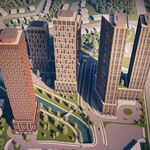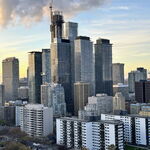dowlingm
Senior Member
Nobody really knows, I think. Probably all waiting to see just when Scarb Extension is actually completed and how demand shifts around by then.I'm looking to potentially buy a condo along the busway, formally near the RT. The condo prices have dropped along this area, probably because of the lack of rapid transit now nearby. (and interest rates etc as well)
Is the busway a permanent thing? Or will they shut it down once the subway opens. I'm ok with a busway to Kennedy, but if they shut it down the subway will be a bit of a walk from where i'm looking to buy.
The likelihood of a service route seems on the low side but maybe it could be kept so buses entering/leaving Kennedy out of service can sidestep on-street routes.




